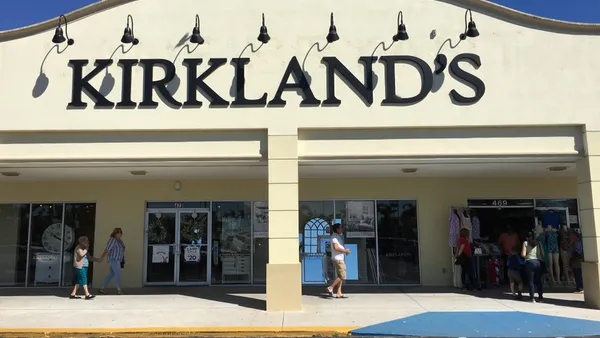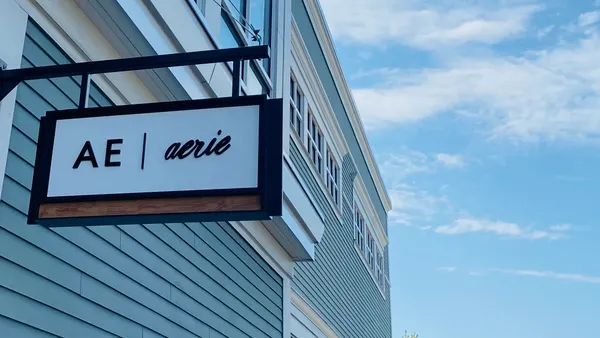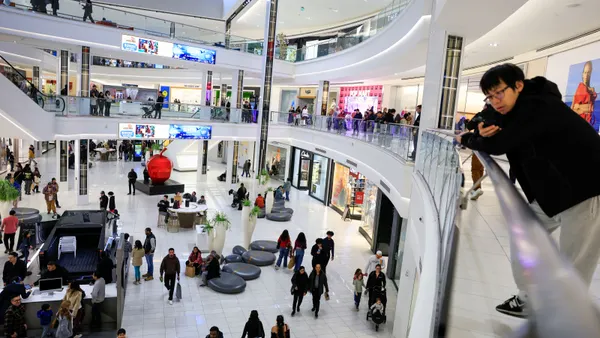Dive Brief:
- Kiko USA, the U.S. subsidiary of an Italian makeup retailer, filed for Chapter 11 bankruptcy last week with plans to close all but five of its domestic retail locations.
- Kiko USA CEO Frank Furlan said in a court filing that the company has been struggling with declines in mall traffic and the shift from brick-and-mortar shopping to e-commerce. Last summer, Furlan was directed to negotiate lower rents and/or early termination with Kiko's landlords, but only one agreed to an early buyout payment.
- The retailer wants to close 24 of its 29 domestic locations in bankruptcy. This, together with a 25th closure, could reduce annual operating losses by $7.1 million a year, and leave $3.9 million in real estate costs going forward, according to Furlan. He added that the retailer hopes to be completely moved out of those locations by Feb. 28.
Dive Insight:
In some ways, the collapse of Kiko's (relatively modest) physical retail business in the U.S. mirrors the changes to retail as a whole.
As mall traffic and brick-and-mortar sales declined, the makeup seller recently launched a new line of business selling through Amazon and using its "Fulfillment by Amazon" program. That business, together with Kiko's own website, were "progressing positively," Furlan said, with 2017 sales growing in the double digits year over year. But physical sales shrank too fast for Kiko to adjust its cost base through lease negotiations.
In that respect, Kiko's bankruptcy looks much like those of some other mall retailers. Vitamin World, for example, closed 45 stores in the run up to its filing, but the closures weren't enough to bolster the company's financial position.
Perfumania and apparel retailer Papaya Clothing also closed stores to try to grapple with a cost base that suddenly became overly inflated amid the mall slowdowns, but they, too, were forced into bankruptcy.
Kiko operates in a relatively healthy sector of retail. In fact, beauty is booming in some quarters.
Furlan said the Kiko brand has a "growing and loyal customer base" with products that are "competitively priced in the 'sweet spot' between expensively priced luxury cosmetic brands and economically priced mass cosmetic brands."
But it's not the only operator playing that "sweet spot." Barry Beck, co-founder of Blue Mercury, said at a recent Washington, D.C., event held by Atlantic Media on the future of retail that he and his wife started the company in part because he "saw something was broken" in beauty retail, with the sector split between high-end experiences and brands in department stores, and low-end brands and experiences at drug stores.
The space has online competition as well. Birchbox co-founder Katia Beauchamp said at the same Atlantic event that her company aims for the average "passive consumer," trying to win them over with a personalized experience. Both Blue Mercury and Birchbox have expanded in physical retail. Beck said Blue Mercury plans to open 50 new locations in 2018.
And then there's Amazon, which already holds 21.1% of the U.S. market share in beauty, and could potentially threaten Marketplace sellers (which would include Kiko) with its own private label products.
Furlan said Kiko is trying to hold its own with a newly developed strategic plan, which includes targeting in-demand products in its assortment, focusing on its five remaining stores and searching for third-party retail partners, investing in staff to improve the customer experience, using more personalized marketing, and expanding the company's e-commerce and Amazon offerings.
Whether Kiko can execute on that plan in and beyond bankruptcy is an open question. Last year saw several retailers — including Payless, Gymboree, rue21 and True Religion — enter and exit bankruptcy, having carried out plans to shed stores, costs and debt. But secular changes in the industry could force more consolidation down the road.














